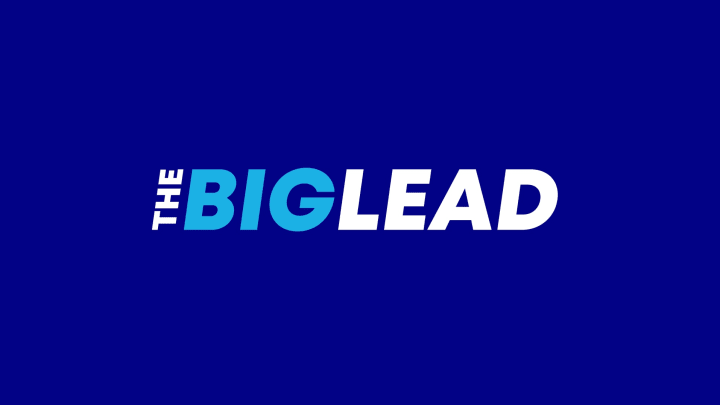No Way To Work Around ESPN's College Football Conflict of Interest.
By Ty Duffy

The Poynter Institute addresses the Longhorn Network, realignment and the issues presented by ESPN’s involvement with and active manipulation of college football. Kelly McBride asserts that “As long as ESPN maintains its journalistic standards and increases reporting resources devoted to college sports…the network should assuage most of its understandably skeptical critics.” That’s quite a substantial “as long as.”
ESPN primarily is a television network. Business-wise, there’s no moral ambiguity. College football is a compelling product. ESPN’s mission is to televise said product and extract as much profit as it can within the bounds of human decency. Activities such as holding bowl games, arranging high-profile non-conference games that otherwise wouldn’t happen and possibly nudging conferences toward consolidating into fewer, more competitive, television friendly entities support that mission.
If there is a moral question about meddling in college athletics, debating it is moot. Even if an idyllic past existed, there’s no dialing back to it. Amateurism exists only in rhetoric to avoid taxes and player payment. Corruption has passed the point of shame. As in every other facet of university life, the money is king. Administrators are slaves to the source. That source is ESPN.
As the money increases, so does the power and influence of ESPN’s programming limb. The question is whether a reputable, functional journalistic enterprise can coexist independently of the organ that funds it.
ESPN argues that it can. The example, cited by McBride as well, is that the Longhorn Network did not prevent ESPN running Mark Fainaru-Wada’s report that Texas spent $400,000 to settle a sexual harassment lawsuit involving former assistant Cleve Bryant. This example does not dispel the conflict of interest.
Texas is a public institution. The lawsuit and any actions Texas took related to the lawsuit are public records. This was going to come out. Texas can’t legally deny that it happened. Besides being inappropriate and embarrassing, the story has no real big picture effect. Burying it would be a bigger story than it coming to light. The issue is not whether ESPN publishes a story unflattering to Texas. It’s how the story gets published. Did this go through normal channels? Or, was it red-flagged, given greater scrutiny and discussed at a higher level than a story about Iowa or West Virginia would be?
What happens if the story did have broader implications for Texas, and ESPN’s nine-figure business deal with the school? Say a reporter receives incontrovertible evidence Texas is paying players. The scandal will ruin Texas football. Does that story get published? Does the reporter have to go through more red tape and hurdles and exhibit a higher-standard of proof than otherwise demanded? Does the business side influence the editing? Does ESPN grant it equal play on the website and Sportscenter? Does the anticipation of the conflict of interest affect how the reporter treats the story?
The journalistic issue is not whether ESPN is above board but whether the public can reasonably trust ESPN to be above board.
We’ve seen this conflict of interest affect ESPN’s coverage of conference realignment. ESPN’s pivotal role in the controversy was seldom mentioned on air or in print. The few times it was it was not presented critically. The one ESPN figure who did call out the company for the Longhorn Network was Pat Forde. We now know why he felt comfortable speaking out.
We’ve seen ESPN sacrifice its journalistic integrity at the programming limb’s behest. Evidence was presented in Mike Leach’s lawsuit that Craig James worked with a PR firm, Spaeth Communications, to concoct a misleading story about the mistreatment of his son. He helped plant said story with an ESPN reporter and ostensibly helped get Mike Leach fired, for refusing to bow to outside influence and play his son. While Craig James is on the air, the incident continues to be an eyesore.
ESPN has watched its journalistic reputation be dragged through the mud. It reprimanded then declined to renew Bruce Feldman – an impeccable college football reporter who was instrumental building the journalistic reputation of ESPN.com – for helping Leach acknowledge what happened in print (i.e. practicing journalism). These actions were to protect a personal relationship. To what lengths would ESPN go to protect a $300 million investment?
According to an ESPN source, the staff received a large presentation about the Longhorn Network and then the floor was opened to questions. A news editor asked whether the Longhorn Network’s existence would hamstring negative coverage of Texas. The approximate response was “Not at all. It will be similar to how the YES Network would cover a bad story about the Yankees, or NESN about the Red Sox.” That, unintentionally, is the best analogy for ESPN’s brand of journalism.
ESPN is a television network. It is embedded. Its business deals will create clouds of intrigue in college football. Like YES or NESN, it can be entrusted to televise games and present salient information for those games and present most innocuous news items. However, there will be incidents where a conflict and, regardless of the hard work and earnest intent of those involved, ESPN can’t be trusted as a disinterested broker of information. Skeptics may be assuaged, but they will give other news outlets far more credence on sensitive subjects.
[Photo via Getty]